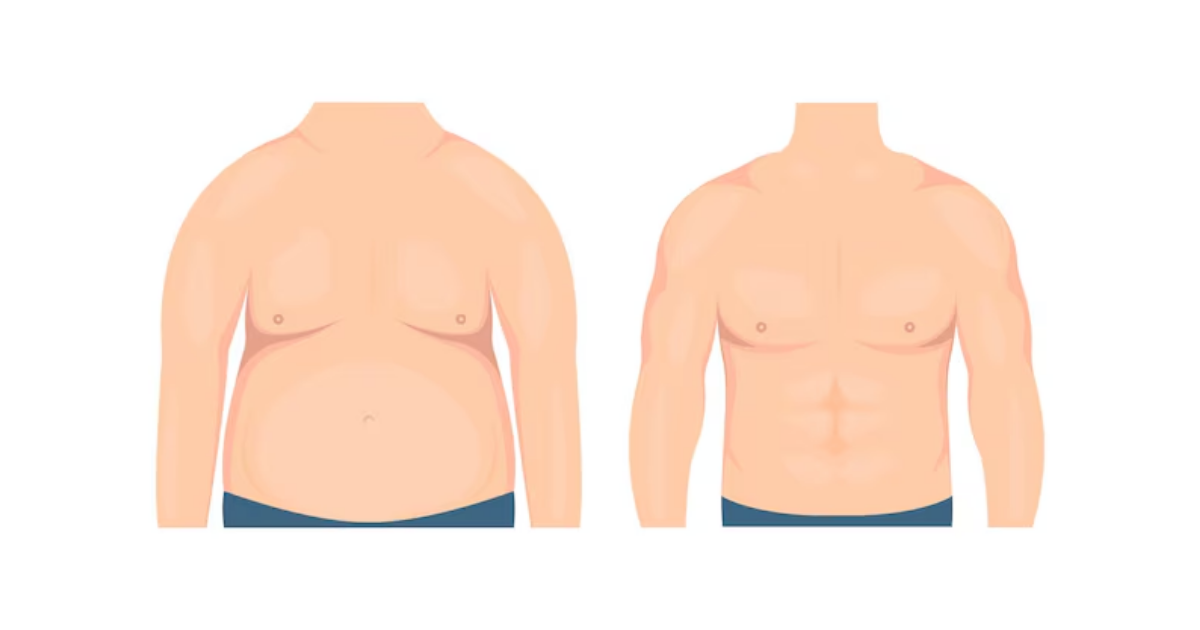The Growing Trend: Men Embracing Aesthetic Enhancement
The landscape of cosmetic surgery is rapidly evolving, and one of the most significant trends is the increasing number of men seeking aesthetic procedures. Liposuction was thus the most common cosmetic surgery for American men in 2023. That year, the second most performed plastic surgery procedure among men in the U.S. was breast reductions (gynecomastia), with 21,043 surgeries registered. This shift represents a fundamental change in how men approach self-care and body image.
The most recent survey reported that they represented 14.5% of the total. The top five surgical procedures were eyelid surgery, gynecomastia, liposuction, rhinoplasty, and facial fat grafting. These statistics reveal that male participation in aesthetic procedures is not just a passing trend but a sustained movement toward self-improvement and confidence enhancement.
Understanding Gynecomastia: More Than Just “Man Boobs”

What Is Gynecomastia?
Gynecomastia is the enlargement of breast tissue in males, affecting men across all age groups. Gynaecomastia is a common problem in the male population with a reported prevalence of up to 36%. This condition goes far beyond simple weight gain , it involves actual breast tissue development that cannot be resolved through diet or exercise alone.
The condition can affect one or both breasts and may develop during different life stages:
- Infancy: Due to maternal hormones
- Puberty: Hormonal fluctuations during adolescence
- Adulthood: Age-related hormonal changes, medications, or underlying health conditions
The Emotional Impact
Men with gynecomastia often experience significant psychological distress, including:
- Reduced self-confidence
- Avoidance of activities requiring shirt removal (swimming, sports, intimacy)
- Social anxiety and embarrassment
- Depression and body dysmorphia
Surgical Solutions and Success Rates
About 20,000 people get this surgery every year. Gynecomastia (the condition this surgery treats) is very common. It affects more than half of men around the world. The high demand for this procedure reflects both its prevalence and the effectiveness of surgical treatment.
Treatment Options Include:
- Liposuction Alone: For cases with primarily fatty tissue
- Surgical Excision: For cases with significant glandular tissue
- Combined Approach: Liposuction with surgical excision for optimal results
Impressive Success Rates:
The breast size, after surgery, satisfied 25 patients to get 92.6% total success rate. Additionally, A 2017 study published in the Aesthetic Plastic Surgery Journal reported that only 12.5% of people who underwent glandular gynecomastia tissue removal experienced recurrence more than 10 years later. In other words, nearly 90% of patients won’t see their gynecomastia return after surgery.
Recovery and What to Expect
The recovery process typically involves:
- Week 1-2: Compression garment wear, limited arm movement
- Week 3-4: Gradual return to normal activities
- 6-8 weeks: Full recovery and final results visible
- Long-term: Permanent results with proper weight maintenance
Hairline Restoration: Advanced Solutions for Male Pattern Baldness

The Hair Loss Reality
Male pattern baldness affects approximately 85% of men by age 50, making it one of the most common aesthetic concerns. Modern hair restoration has evolved dramatically from the obvious “hair plug” procedures of the past.
Modern Hair Transplant Techniques
Follicular Unit Transplantation (FUT):
- Strip method with linear scar
- Higher yield of grafts in single session
- Best for extensive balding
Follicular Unit Extraction (FUE):
- Individual follicle extraction
- Minimal scarring
- Faster recovery time
- Can be performed robotically
Advanced Options:
- Platelet-Rich Plasma (PRP): Stimulates natural hair growth
- Scalp Micropigmentation: Creates appearance of buzz-cut hair
- Hair Systems: Modern, undetectable hair pieces
Success Rates and Expectations
Modern hair transplant procedures boast success rates of 90-95% when performed by qualified specialists. The key factors for success include:
- Sufficient donor hair quality and quantity
- Realistic expectations about coverage
- Post-operative care compliance
- Understanding that results take 12-18 months to fully develop
Body Contouring: Sculpting the Male Physique

Popular Body Contouring Procedures
Liposuction: The most popular surgical procedure among men, liposuction effectively removes stubborn fat deposits that resist diet and exercise. Common treatment areas include:
- Abdomen and flanks (“love handles”)
- Chest area (often combined with gynecomastia treatment)
- Neck and jawline
- Back and shoulders
Abdominoplasty (Tummy Tuck): Addresses both excess skin and separated abdominal muscles, particularly beneficial for men who have:
- Significant weight loss
- Post-pregnancy body changes (increasingly common among fathers)
- Aging-related skin laxity
CoolSculpting and Non-Invasive Options: For men seeking minimal downtime, non-surgical fat reduction offers:
- No anesthesia required
- Minimal to no downtime
- Gradual, natural-looking results
- Multiple treatment areas in single session
The “Dad Body” Transformation
An emerging trend is men addressing physical changes after becoming fathers, including:
- Weight gain during partner’s pregnancy
- Loss of muscle tone due to lifestyle changes
- Increased stress and decreased exercise time
Body contouring procedures help these men regain confidence and maintain their health goals.
Making the Decision: What to Consider
Choosing the Right Surgeon
Research is crucial when selecting a plastic surgeon:
- Board Certification: Ensure certification by the American Board of Plastic Surgery
- Experience: Look for surgeons specializing in male aesthetics
- Before/After Photos: Review extensive galleries of similar cases
- Patient Reviews: Read testimonials from male patients specifically
Financial Considerations
Cosmetic procedures are typically not covered by insurance, so consider:
- Total cost including facility fees, anesthesia, and follow-up care
- Financing options and payment plans
- Time off work for recovery
- Long-term value versus temporary solutions
Realistic Expectations
Success in male plastic surgery requires:
- Understanding limitations of each procedure
- Commitment to post-operative care
- Realistic timeline expectations
- Healthy lifestyle maintenance for lasting results
The Recovery Journey
Physical Recovery
Each procedure has specific recovery requirements:
- Pain Management: Modern techniques minimize discomfort
- Activity Restrictions: Gradual return to exercise and work
- Follow-up Care: Regular appointments ensure proper healing
Psychological Benefits
Men who undergo cosmetic procedures often report:
- Increased self-confidence
- Improved body image
- Enhanced professional presence
- Better intimate relationships
- Motivation to maintain healthy lifestyle
Future Trends in Male Aesthetics
Emerging Technologies
- 3D Imaging: Virtual reality consultation and result prediction
- Robotic Surgery: Increased precision in hair transplants
- Regenerative Medicine: Stem cell therapies for natural enhancement
- Minimally Invasive Techniques: Reduced downtime with better results
Changing Attitudes
In western countries, men are increasingly using cosmetic surgery. However, despite this trend, there remains a dearth of information on the prevalence, acceptance, and motivations behind men’s use of cosmetic surgery. As social stigma continues to diminish, more men are openly discussing and pursuing aesthetic enhancement.
Key Takeaways
- Growing Acceptance: Male plastic surgery is becoming mainstream with they represented 14.5% of the total procedures globally.
- High Success Rates: Procedures like gynecomastia surgery show an impressive 92% success rate for surgical procedures with modern techniques.
- Multiple Options: From surgical to non-invasive, men have various choices to address aesthetic concerns.
- Long-term Results: Most procedures offer permanent or very long-lasting results when performed correctly.
- Professional Care: Success depends heavily on choosing qualified, experienced surgeons who understand male anatomy and aesthetic goals.
Conclusion
The rise in male plastic surgery represents more than just a trend, it reflects a fundamental shift in how men approach self-care, confidence, and personal well-being. Whether addressing gynecomastia, hair loss, or body contouring needs, modern techniques offer effective, safe solutions with high satisfaction rates.
For men considering these procedures, the key is thorough research, realistic expectations, and choosing qualified professionals. With proper planning and care, these procedures can provide life-changing improvements in confidence, comfort, and quality of life.
The stigma surrounding male cosmetic procedures continues to fade as more men recognize that investing in their appearance and self-confidence is not vanity, it’s self-care. As techniques continue to advance and results improve, we can expect even more men to embrace these transformative options in the years ahead.

